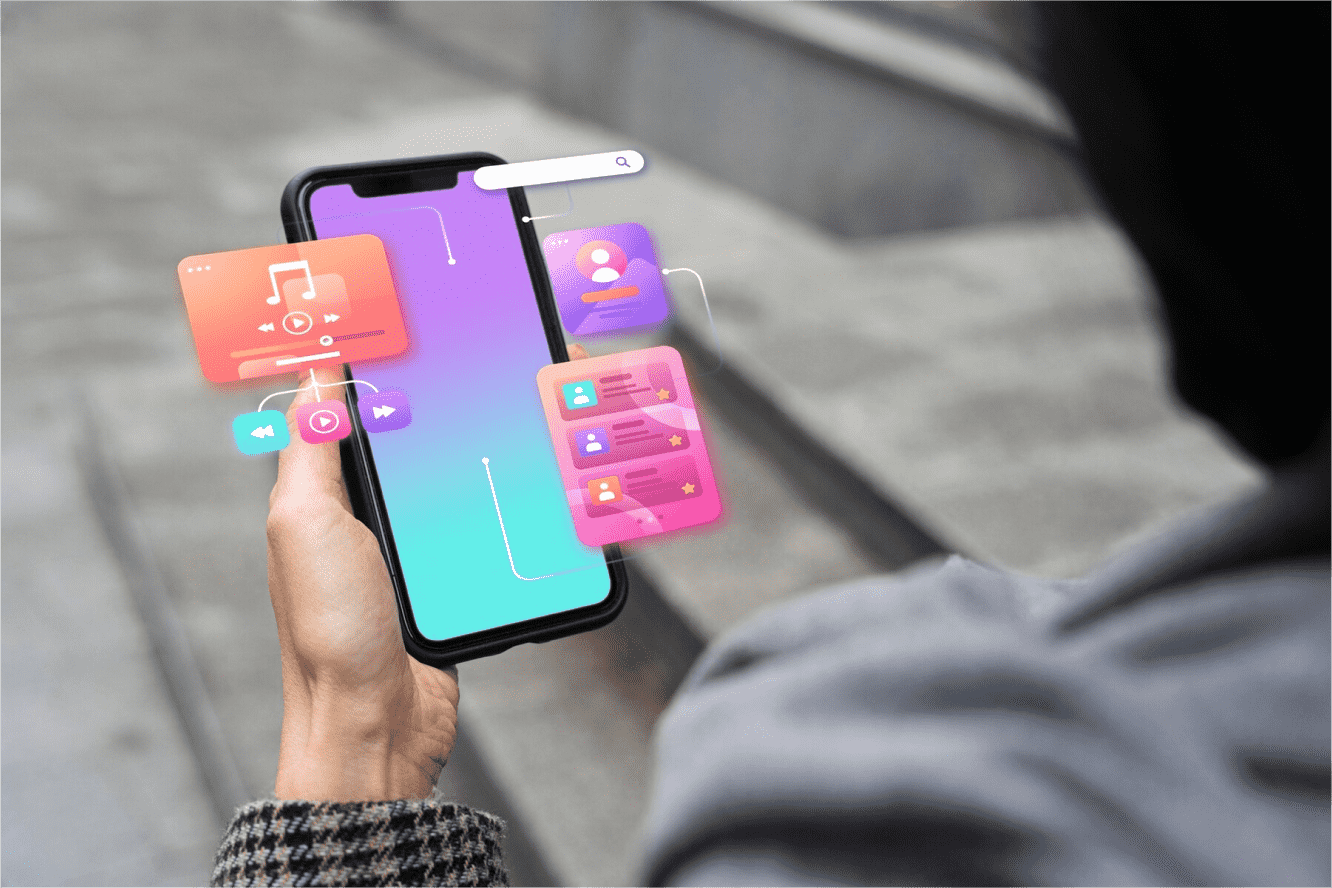Impact of UX Design on a Customer

Introduction
User experience design is one of the most essential factors that determine the fulfillment of a service or product. It’s the glue that holds together the person’s journey, from their first come-up with a product to the outcome. User experience, or UX, refers to the overall feeling a person has when they interact with a digital product such as a website, app, or software. It encompasses everything from the look and feel of a product, to how easily it can be used and navigated, to the emotions it evokes.
In the digital age, where competition is just a click away, it’s more important than ever for businesses to focus on creating a positive user experience to stand out and retain customers. By the end, you’ll be convinced that implementing user experience design is not just a luxury, but a necessity for any business looking to thrive in today’s competitive market.
Connection Between User Experience and Customer Satisfaction
The connection between user experience and customer satisfaction is simple yet powerful. A great user experience leads to satisfied customers, and satisfied customers are more likely to continue using a product, recommend it to others, and even become loyal brand advocates.

Think about it – when you use a product that is intuitive, easy to navigate, and provides a positive emotional experience, you are more likely to enjoy the overall experience and come back for more. On the other hand, a product that is difficult to use, slow to load, or visually unappealing can leave a negative impression and result in decreased customer satisfaction.
Building Trust and Loyalty
One of the key themes related to the impact of user experience design on customer satisfaction is the role it plays in building trust and loyalty. When customers have a positive user experience, it creates a sense of trust in the brand or product. They feel confident that the company cares about their needs and is committed to providing a high-quality experience. This, in turn, fosters loyalty, as customers are more likely to stick with a brand that consistently delivers a seamless and enjoyable user experience. A positiveuser experience design also helps to foster a sense of loyalty by making customers feel valued and appreciated. In today’s competitive market, user experience design isn’t just about functionality; it’s about building trust and loyalty. Imagine every interaction leaving customers not just satisfied, but genuinely delighted. That’s the power of exceptional UX design – it fosters an unbreakable bond with your brand. By prioritizing user-centricity, you show customers that their needs matter, creating advocates who will champion your brand. In a world where every click counts, investing in user experience is investing in the future of your business.

Enhancing Efficiency and Productivity
Another important aspect of user experience design is its impact on efficiency and productivity. A well- designed user interface can significantly improve the overall workflow and streamline processes. By minimizing the number of steps required to complete a task or find information, businesses can save customers valuable time and energy.
Picture this: You’re standing in line at the bank, waiting to transfer some funds before rushing off to your next appointment. The clock is ticking, and every second counts. As you glance around, you notice some customers breezing through the process with ease, while others seem to be stuck in a maze of confusion.
You decide to give the bank’s mobile app a try. With a few taps, you’re in. The interface is clean, the options are clear, and within moments, your transaction is complete. No waiting in line, no paperwork, just smooth sailing.
Now, contrast that with a different scenario. You download another bank’s app, hoping for the same convenience. But as you navigate through the cluttered menus and struggle to find the simplest functions, frustration sets in. What should have been a quick task turned into a time-consuming ordeal
In both cases, the outcome hinges on one crucial factor: user experience design. The first app respects your time, with a layout designed for efficiency and simplicity. The second app, on the other hand, leaves you feeling drained and discouraged.
This is the power of user experience design in action. A well-designed app will have a user-friendly interface with intuitive navigation, making it easy for customers to access their accounts, transfer funds, or pay bills. In contrast, a poorly designed app may have confusing menus, hidden features, or slow loading times, causing frustration and wasted time for customers.
Emotional Connection and Brand Loyalty
Beyond just creating a seamless and efficient experience, user experience design also has the power to create an emotional connection with customers. When a website, app, or product is designed in a way that resonates with the user on a deeper level, it can evoke positive emotions and strengthen their bond with the brand.
For example
Imagine scrolling through an online clothing store, searching for that perfect outfit for an upcoming event. You stumble upon a website that not only showcases stunning garments but also tells a story that speaks directly to your soul.
As you explore further, you find yourself nodding in agreement with the brand’s message. They understand your desire to stand out, to be seen, to be a part of something bigger than yourself. And suddenly, it’s not just about buying clothes; it’s about joining a community of like-minded individuals who share your passion for fashion and individuality.
In that moment, a connection is forged – not just between you and the brand, but between you and every other person who has ever felt the same way. It’s a bond that goes beyond transactions, beyond products, and beyond mere functionality. It’s an emotional connection that transcends the digital realm and leaves a lasting impression on your heart

Accessibility and Inclusivity
User experience design also has a significant impact on accessibility and inclusivity. When a website, app, or product is designed with accessibility in mind, it ensures that everyone, regardless of their abilities or disabilities, can easily navigate and interact with it. By considering factors such as color contrast, font size, screen reader compatibility, and keyboard accessibility, businesses can make their digital experiences inclusive and accessible to a wider range of users. This not only helps to comply with accessibility regulations but also demonstrates a commitment to diversity and inclusivity. Additionally, user experience design can also address the needs of diverse user groups, such as older adults, non-native speakers, or individuals with low digital literacy

Ethical Considerations in User Experience Design
In the ever-evolving landscape of user experience design, there’s a crucial element that often goes unnoticed amidst the allure of sleek interfaces and seamless interactions: ethics. Yes, you heard it right – ethics. Beyond just crafting visually appealing designs, there’s a responsibility that lies on the shoulders of every UX designer – a responsibility to uphold ethical standards.
Think about it. In this age of rampant technological advancement, where data flows freely and privacy seems like a relic of the past, users are more vigilant than ever about how their information is handled. And rightfully so. They want reassurance that their data is not just another commodity to be traded or exploited.
This is where ethical considerations come into play. It’s about more than just ticking off boxes or following legal mandates. It’s about building a culture of transparency, accountability, and respect for user privacy.
Remember that your choices have consequences – not just for your users, but for the future of ethical design as a whole. And remember that by prioritizing ethics, you’re not just creating great experiences; you’re shaping a better, more responsible digital world for us all.

Cultural Sensitivity and Localization
In a globalized world, user experience design must take into account cultural differences and localization requirements. What works well for one audience may not resonate with another due to variations in language, cultural norms, and user expectations.
By incorporating culturally sensitive elements into the design, such as appropriate imagery, language adaptations, or user interface adjustments, businesses can ensure their digital experiences align with the local culture. This localization can make users feel understood, valued, and more likely to be engaged with the brand

Cultural Sensitivity and Localization
In conclusion, the impact of user experience design on customer satisfaction is multifaceted. By prioritizing user experience design, businesses can create seamless and enjoyable experiences for their customers, fostering loyalty and trust. It is clear that user experience design is not just a luxury, but a necessity for businesses looking to thrive and meet the ever-evolving needs of their customers
Want Exceptional UX for Your Website? Contact Us – Techtix
We specialize in creating user experiences that stand out. If you’re ready to elevate your website’s UX, contact us at Techtix. Our team is here to make your digital journey enjoyable, efficient, and user- friendly. Let’s transform your website into a place users love to explore. check our case studies.
Just drop an email at hello@techtix.co to contact the specialists in our team and get started with a full fledged professional website for your business in very economical packages!



